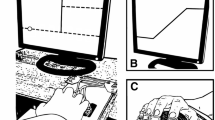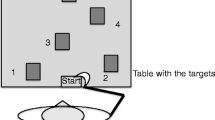Abstract
The study addresses an issue of possible relations between the apparent “clumsiness” of persons with Down syndrome (DS) and changes in indices of finger coordination. We hypothesized that persons with DS would prefer less challenging, safer motor strategies reflected in finger coordination patterns. Maximal single and multi-finger force production (MVC) tasks and multifinger tasks that required the production of a controlled time pattern (ramp) of total force were studied. As compared to typical persons, persons with DS showed lower peak forces, lower force deficit (loss of finger force in multi-finger tasks as compared to single-finger tasks), and higher enslaving (involuntary force production by fingers that are not required to produce force). They showed higher variance of total force computed across several trials for ramp tasks. Their total force variance was higher than the sum of the variances of individual finger forces over the ramp duration, while in control participants the relation was opposite during the middle and late thirds of the ramp. Persons with DS practiced force production tasks over 3 days, one group practicing only one of the tasks (the ramp task with all four fingers acting together) while the other group practiced MVC and ramp tasks (variable practice). Practice led to an increase in MVC, force deficit, and enslaving. The relation between the total force variance and the sum of the variances of individual finger forces became closer to the one observed in typical persons. The effects of practice were more pronounced in the variable practice group. We conclude that persons with DS have a deficit in control of both single fingers and multi-finger groups. They use a less challenging, suboptimal strategy of multi-finger coordination which does not take advantage of the possibility of error compensation among the fingers. Practice is an effective way of improving finger coordination in DS, particularly when using variable tasks.
Similar content being viewed by others
Author information
Authors and Affiliations
Corresponding author
Rights and permissions
About this article
Cite this article
Latash, M.L., Kang, N. & Patterson, D. Finger coordination in persons with Down syndrome: atypical patterns of coordination and the effects of practice. Exp Brain Res 146, 345–355 (2002). https://doi.org/10.1007/s00221-002-1189-3
Received:
Accepted:
Published:
Issue Date:
DOI: https://doi.org/10.1007/s00221-002-1189-3




